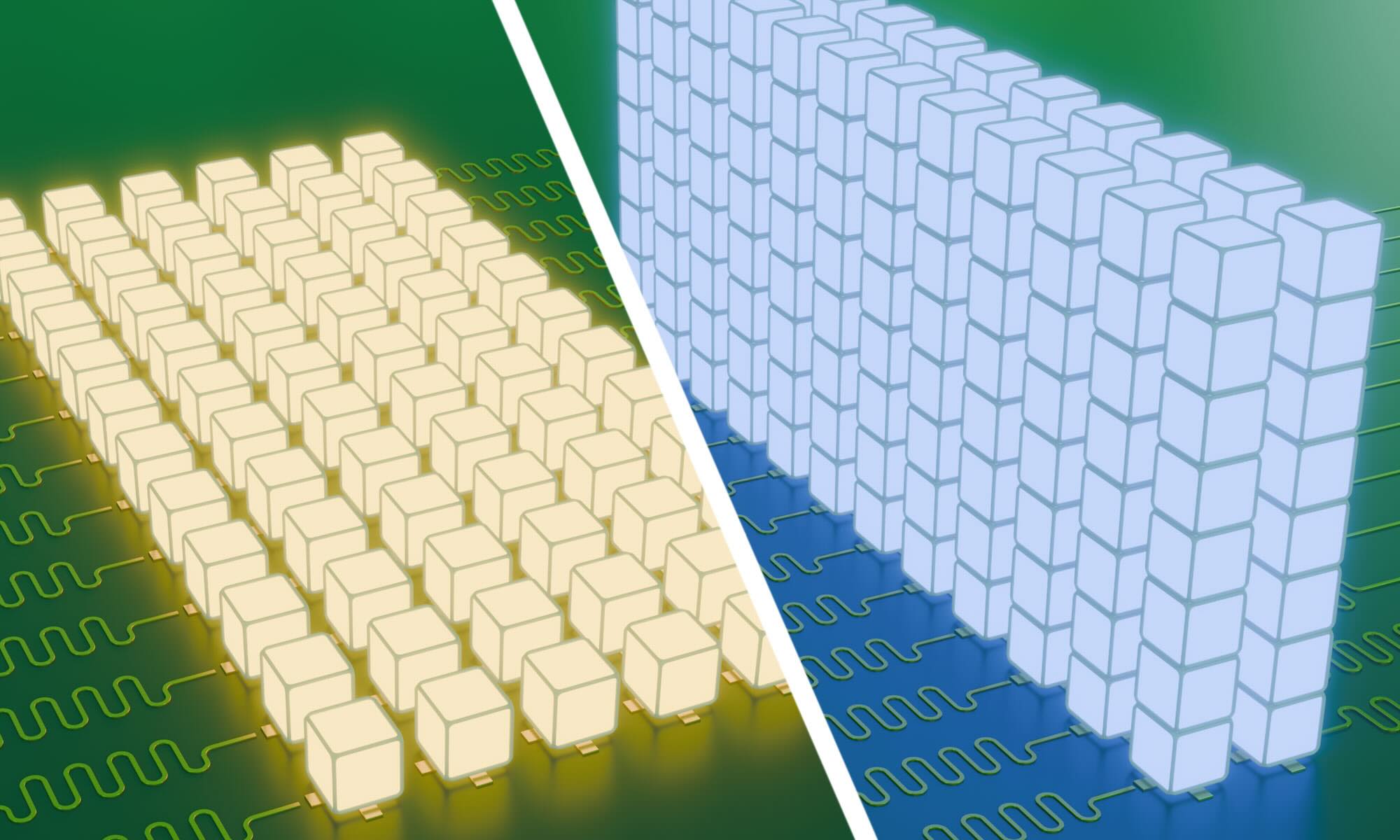Using qudits, Rochester scientists have solved a notoriously difficult problem involving Hilbert space, or the quantum matrix.
Quantum computers have the potential to revolutionize computing by solving complex problems that stump even today's fastest machines. Scientists are exploring whether quantum computers could one day help streamline global supply chains, create ultra-secure encryption to protect sensitive data against even the most powerful cyberattacks, or even develop more effective drugs by simulating their behavior at the atomic level.
But building efficient quantum computers isn't just about developing faster chips or better hardware. It also requires a deep understanding of quantum mechanics-the strange rules that govern the tiniest building blocks of our universe such as atoms and electrons-and how to effectively move information through quantum systems.
In a paper published in Physics Review X, a team of physicists-including graduate student Elizabeth Champion and assistant professor Machiel Blok from the University of Rochester's Department of Physics and Astronomy-outlined a method to address a tricky problem in quantum computing: how to efficiently move information within a multi-level system using quantum units called qudits.
"Efficiently controlling a qudit processor has been a long-standing challenge," says Champion, the paper's first author. "The methods we developed allow the core operations of a qudit-based quantum computer to be performed in far fewer steps, making full use of the hardware. This can potentially enable quantum computations and simulations that were not possible before."
Inside Hilbert space-aka the quantum matrix
In the 1999 sci-fi movie The Matrix, the main character Neo sees the world not as physical objects such as streets and skyscrapers but as a stream of 1s and 0s-the raw data underlying his reality. In quantum physics, there is a similar underlying framework beneath the familiar world of particles and forces. This matrix is called Hilbert space.

In classical computers, information lives in specific places on a chip. But in quantum computers, information isn't tied to a specific location. Instead, it lives in the more abstract world of Hilbert space, a massive mathematical landscape. Here, particles aren't just tiny dots zipping around but also abstract waves of probability, existing in many locations and states at once. Although Hilbert space is not something you can see or locate in the physical computer chip, it's where the computational power of quantum computing happens.
"The mathematical structure that we use to represent a state of a quantum computer and a calculation is literally a matrix," Blok says. "The goal for a quantum computer is to efficiently move information around in that matrix."
Beyond bits and qubits
Moving information through the abstract mathematical landscape of Hilbert space is no small feat. To do this, scientists rely on quantum building blocks called qubits-and, more powerfully, qudits.
While classical computers transport information using billions of tiny switches called bits, quantum computers typically move information through Hilbert space using qubits-quantum bits that can exist in multiple states at once. In classical systems, each bit is either a "0" (off) or a "1" (on). Qubits, however, are governed by the strange laws of quantum mechanics and can be both "0" and "1" at the same time.
But even qubits have their limits. Blok likens qubits to "building a sprawling city with too many roads, such as Los Angeles." His research introduces a fundamentally different approach to moving information within Hilbert space using qudits, which can store more information in a single location. In other words, qudits go beyond "0s" and "1s" and might have three or more states ("0," "1," "2," etc.) in which to encode information. This makes the architecture more like "a dense, high-rise city such as New York," he says.
The new method developed by Blok and Champion employs "the largest qudit and the most efficient method to operate it," Blok says. The method is inspired by nuclear magnetic resonance, a technique that uses magnetic fields to manipulate a quantum property of particles called "spins."
"It's like connecting all the floors of a high-rise building simultaneously," Blok says. "By tapping into techniques from big-spin physics, we've discovered a much more efficient way to route quantum information within each qudit, potentially unlocking faster, more scalable quantum computers with far fewer operational bottlenecks."






